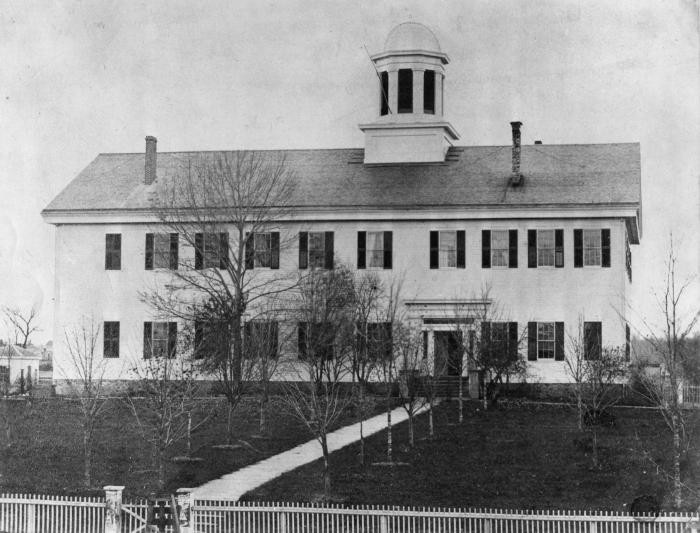Lansing's First Capitol Building, Historical Marker
Introduction
Text-to-speech Audio
This historical marker designates the location of the first capitol building that was created after the legislature moved the capitol from Detroit to Lansing in 1847. The first capitol building in Lansing was erected soon after this decision and was a simple wooden structure, was located at the corner of Washington and E. Allegan Ave. This building was created in the winter of 1847-1848 and designed by Israel Gillett.
The modest structure was two stories tall with white with green trim and a tin cupola on the roof. The building only measured 60 ft wide by 100 ft long but contained legislative and supreme court chambers, an office for the governor, a few other offices and a library. Including a small addition that was later constructed, the total cost of the first state capitol was $22,952. By 1871, plans were already underway to replace this building with the grander state capitol that exists today, completed in 1879. The first capitol was sold and used for manufacturing and offices, until it was destroyed by fire in 1882.
Images
Michigan's second capitol and the first capitol in Lansing, completed in 1848.

Backstory and Context
Text-to-speech Audio
When Michigan became a state in 1837, the first state capital was established temporarily in Detroit. However, the Michigan Constitution required that a permanent location be designated by 1847, as Detroit was not an ideal location for the state capital. Four primary arguments were given for moving the capital inland:
- To increase the defensibility of the capital by moving it away from the Canadian border
- To promote settlement in the inner regions of the state
- To make the capital more accessible to the people of the entire state
- To boost the economy of the interior
Sources
1. "The First Capitol." Capitol History. Accessed May 5, 2016. http://www.senate.michigan.gov/history/capitolhistory.html.
2. "Your State Capitol." Michigan Legislature. Accessed May 5, 2016. http://www.michigan.gov/documents/hal_lm_capinfo_54904_7.pdf
3. "Lansing Becomes the State Capital." Michigan Markers. Accessed May 5, 2016. http://www.michmarkers.com/startup.asp?startpage=S0587.htm.
2. "Your State Capitol." Michigan Legislature. Accessed May 5, 2016. http://www.michigan.gov/documents/hal_lm_capinfo_54904_7.pdf
3. "Lansing Becomes the State Capital." Michigan Markers. Accessed May 5, 2016. http://www.michmarkers.com/startup.asp?startpage=S0587.htm.
